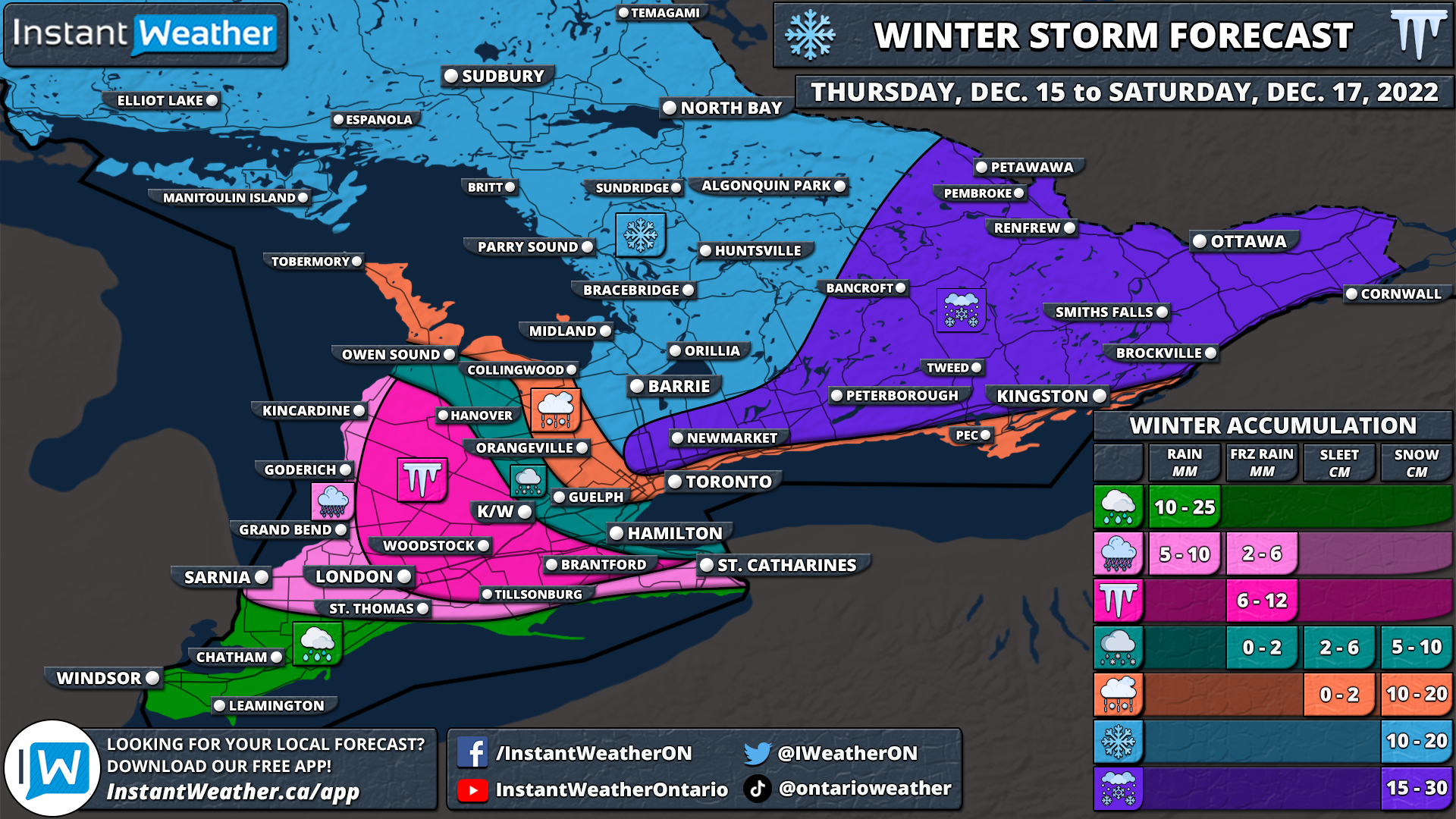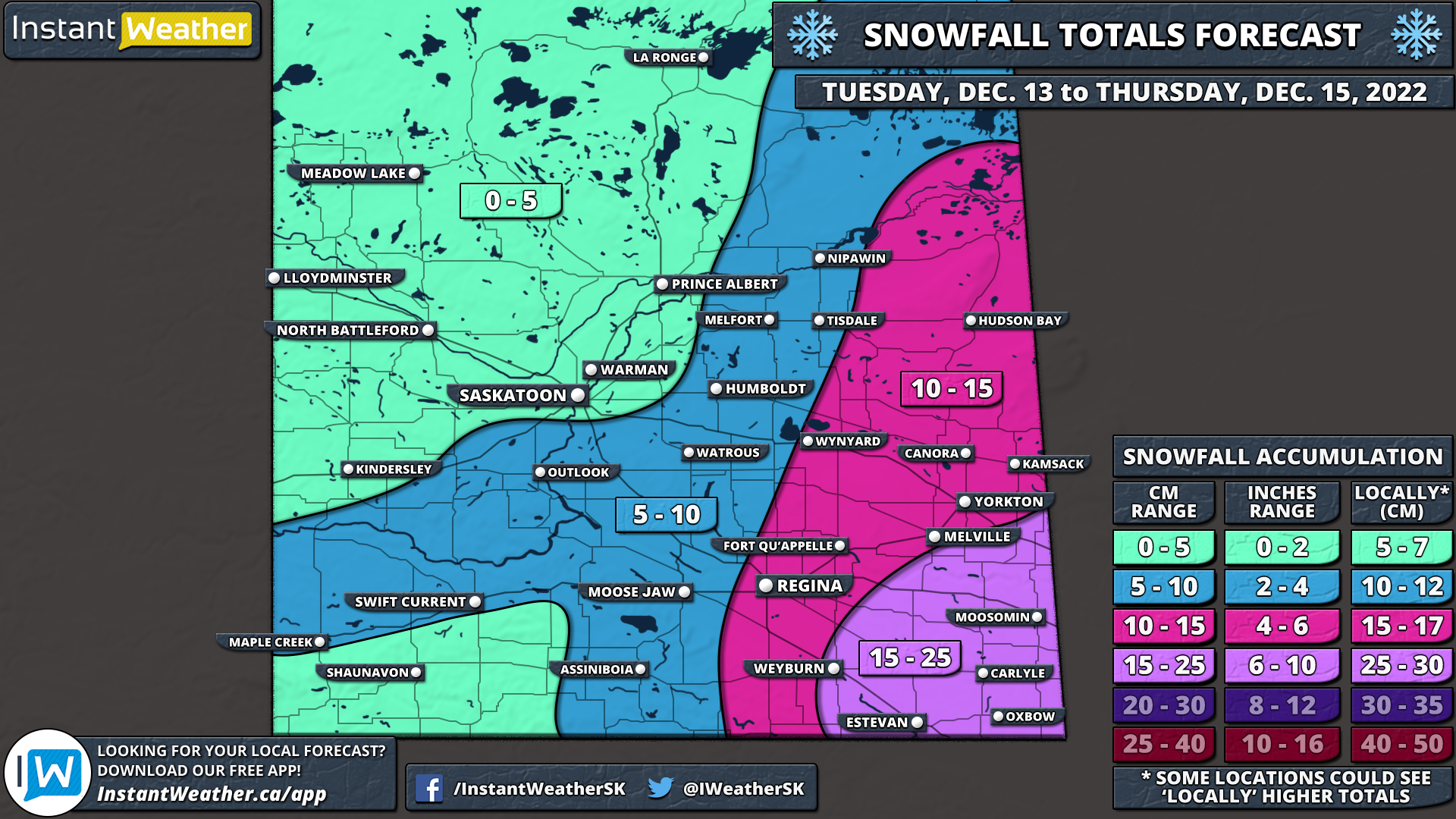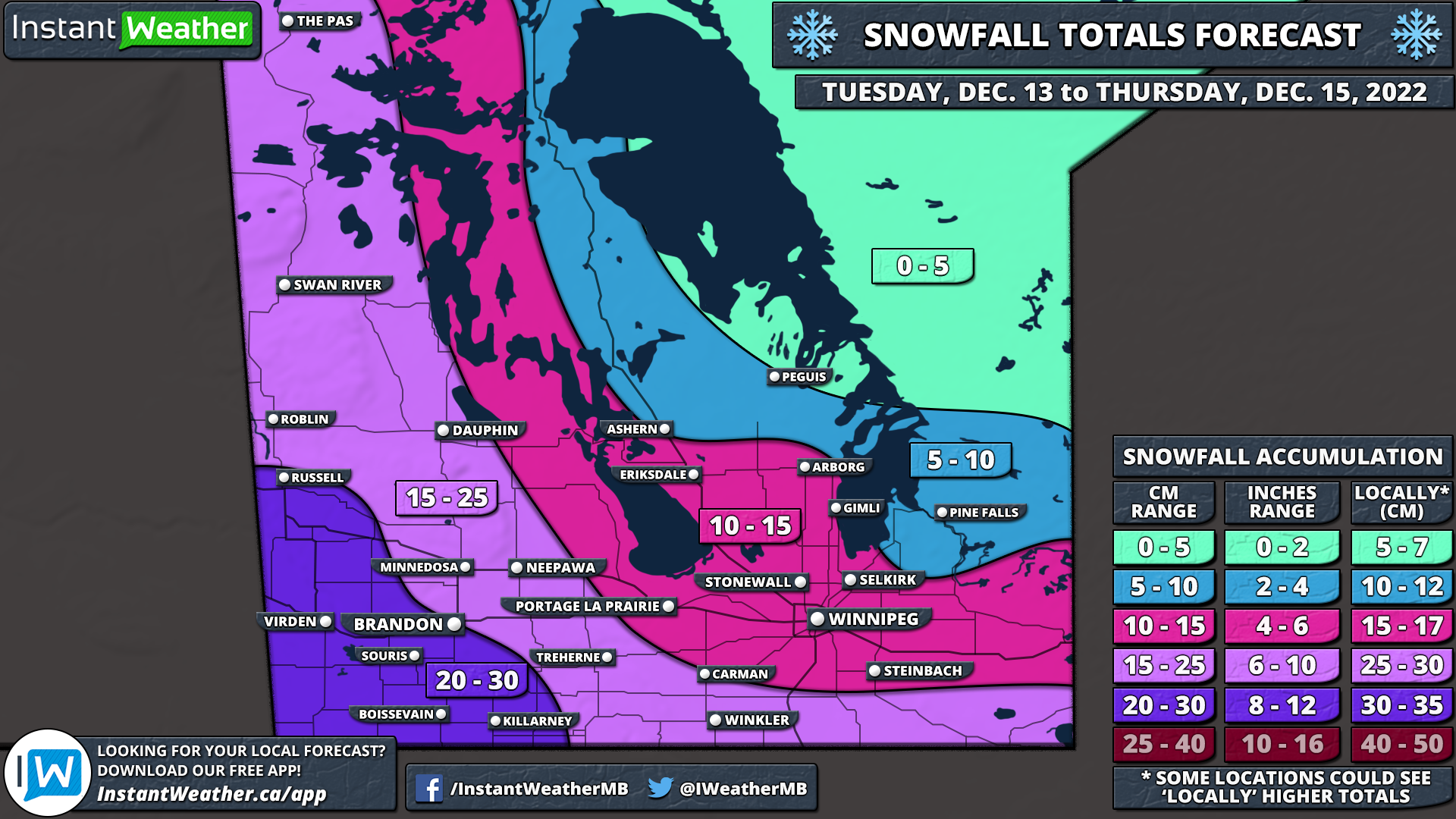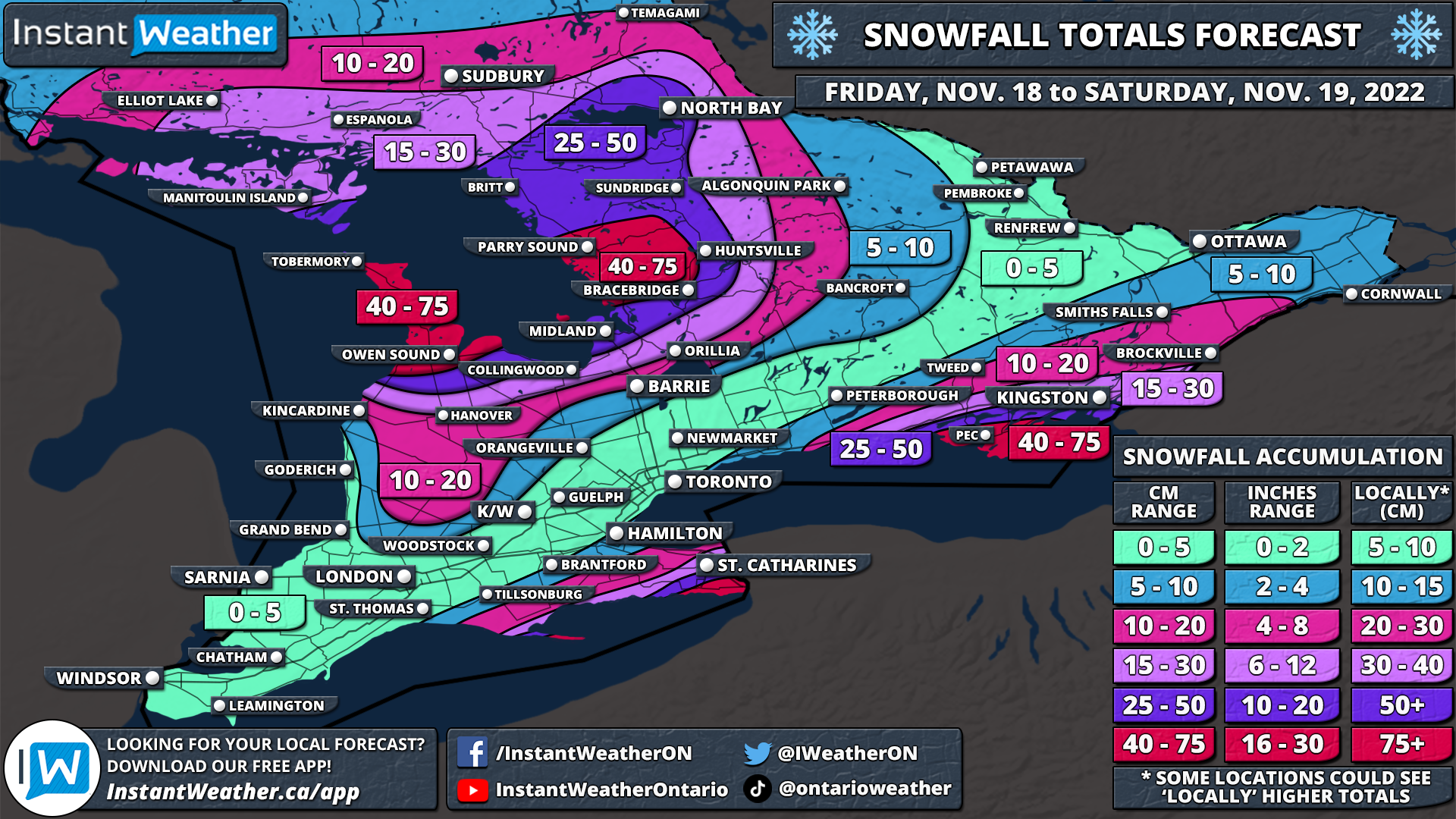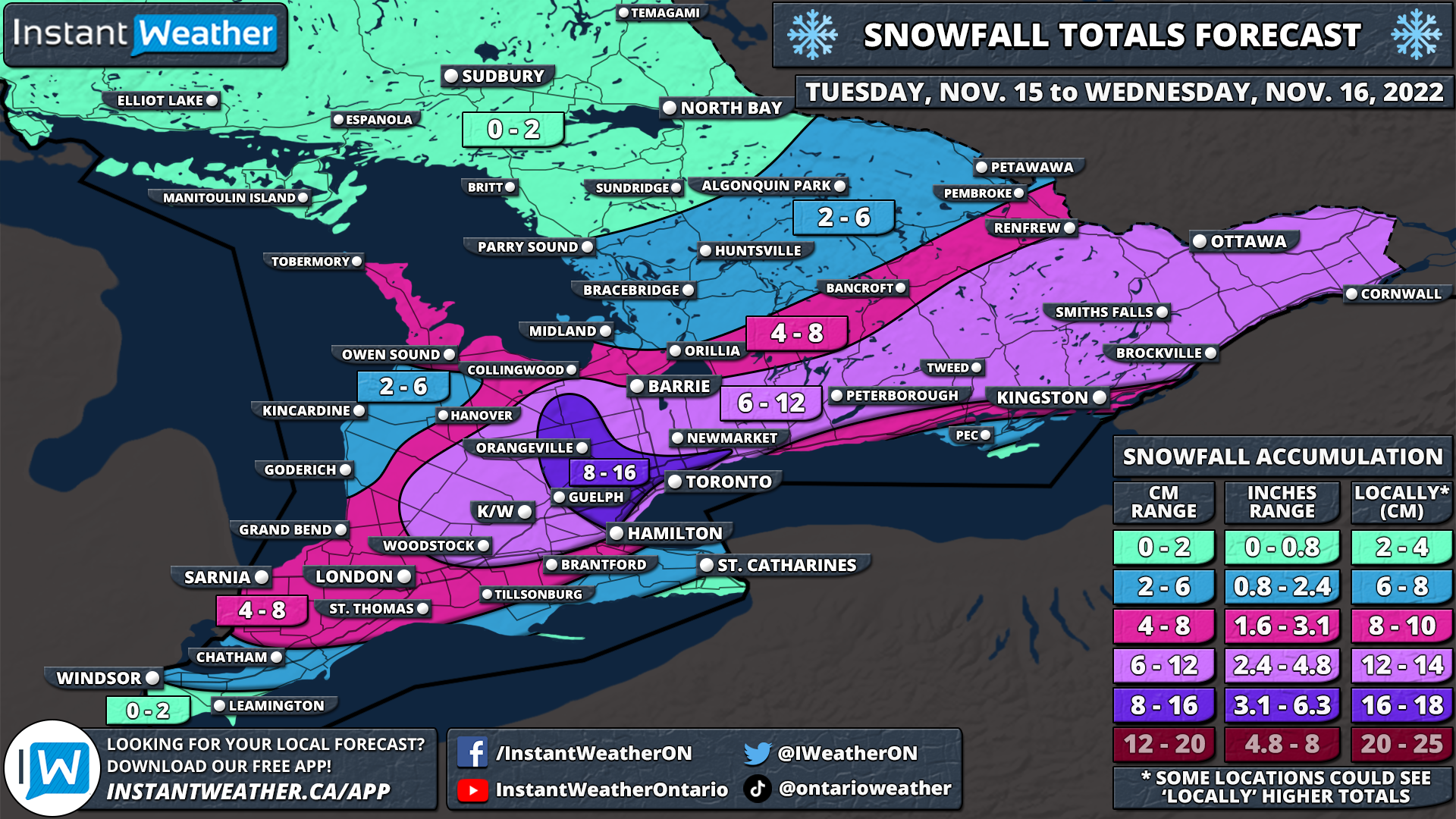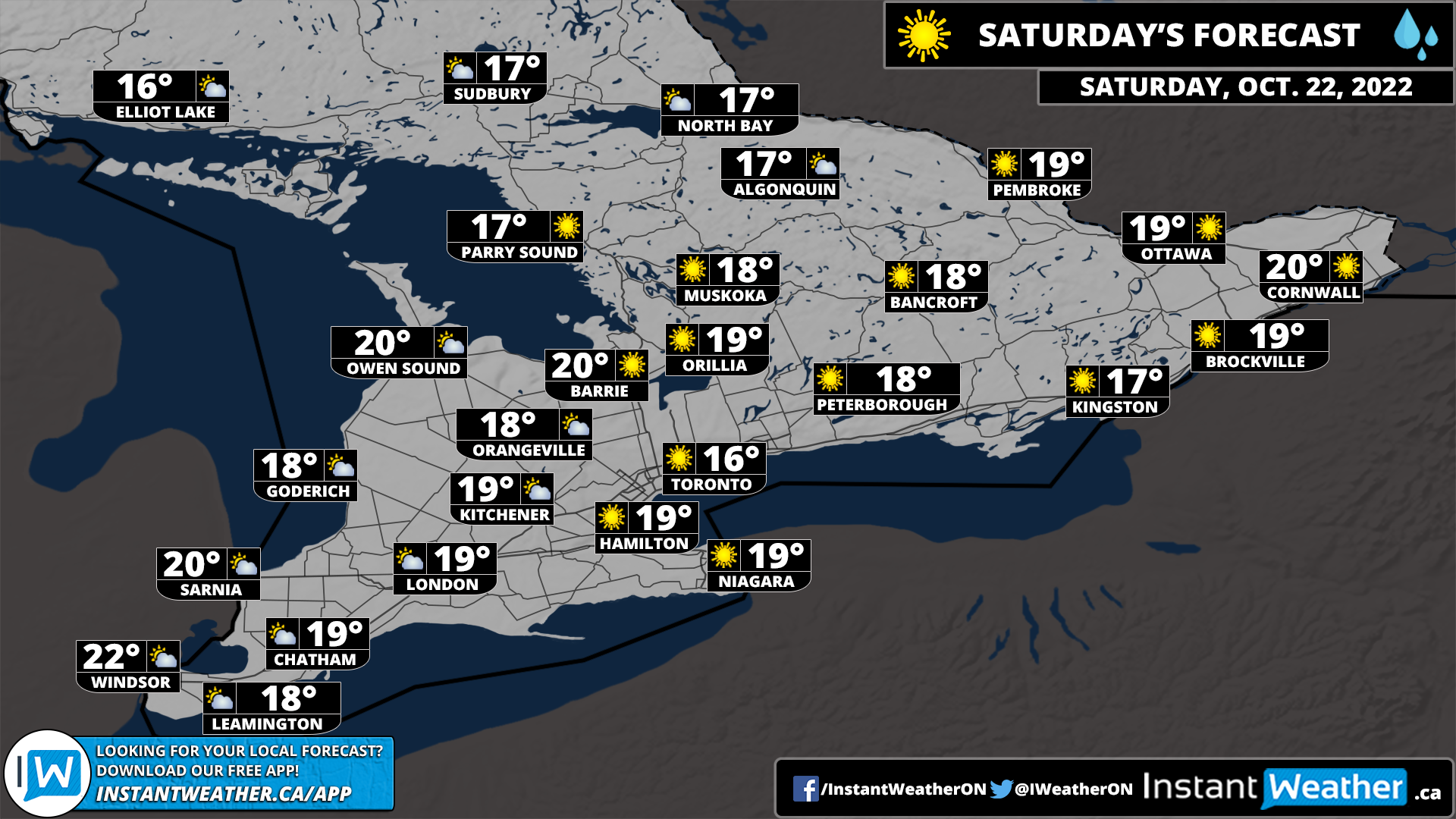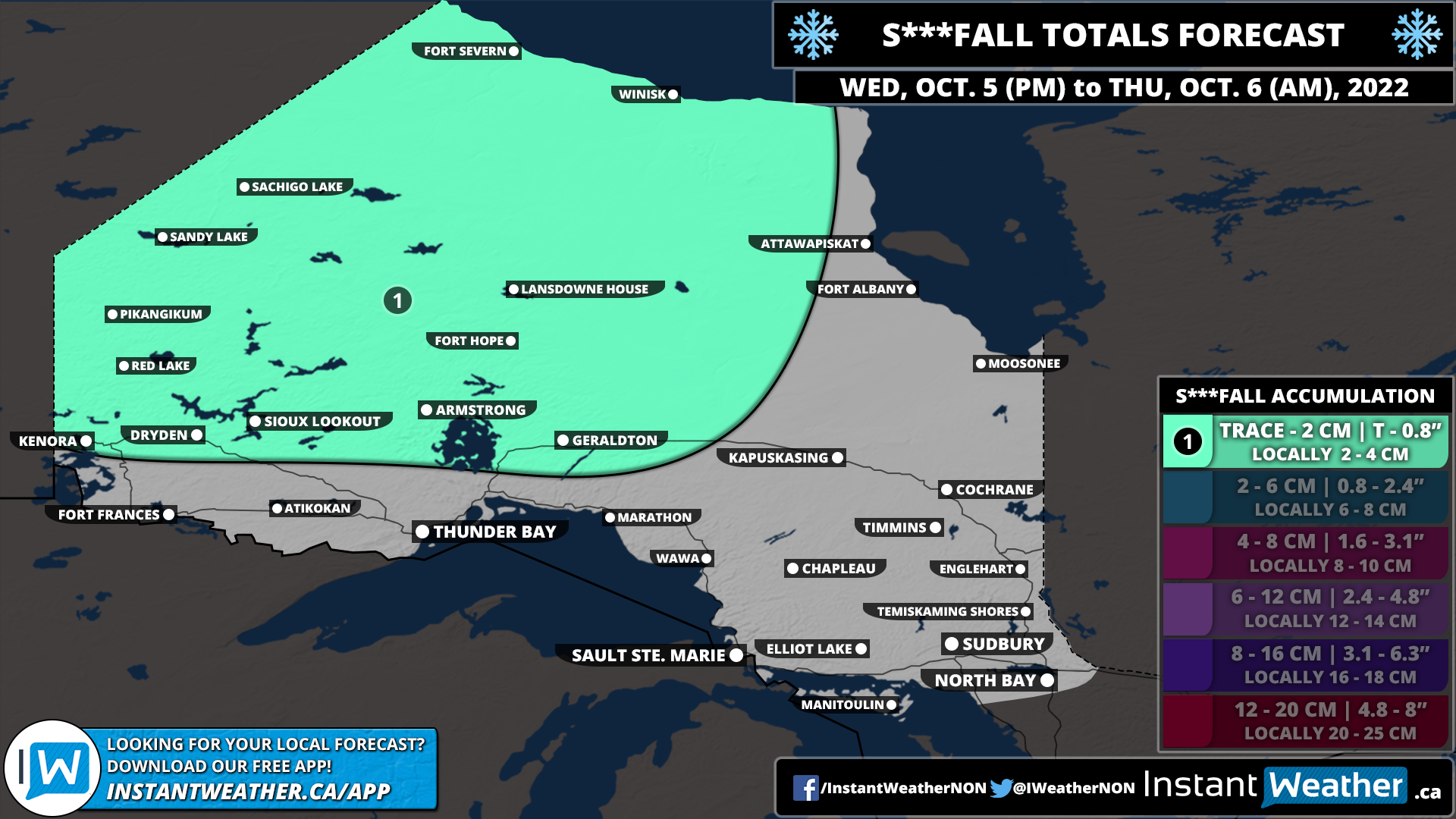The weather across Southern Ontario has been fairly inconsequential so far in November when we normally get the first taste of winter. While the month has been dominated by unseasonably warm temperatures with multiple days of temperatures into the 20s, that is about to change as we go into the upcoming weekend. The remnants of what was Hurricane Nicole which made landfall in Florida is currently tracking up the east coast of America and is expected to spread heavy rain across Southern Ontario starting Friday afternoon.
In the wake of this system, we will see a sharp cooldown plunging temperatures to near or below the freezing mark by Sunday morning. This will serve as a kickstart to the lake effect snow machine off Lake Huron and Georgian Bay with the potential for accumulating snow in parts of the traditional snowbelts late Saturday into Sunday. Even parts of Southern Ontario including the GTA that have yet to see the first flakes of the season thus far could see that change this weekend with lake effect flurries quite widespread.
Before we get to the winter wonderland in store for us over the weekend, we must get through the rain on Friday. The first bands of precipitation are expected to reach the Lake Erie shoreline sometime during the early afternoon on Friday. As such, the Niagara and Hamilton regions will be the first to see the rain as it spreads further to the north and west later in the afternoon. By the dinner hour, most of Southern Ontario will be in the middle of the moderate to heavy rainfall so expect poor driving conditions for the evening commute and plan some extra time to get to your destination. Rain will continue throughout the evening as it slowly clears from the southwest late in the evening. Most of Southern Ontario will be finished with the rain by midnight although it will linger around overnight for Eastern Ontario.
There has been a slight eastern shift in the track of this system over the past 24 hours and as a result, we are now looking at lower overall rainfall totals for Southern Ontario. The heaviest totals appear to be contained to the Niagara region and into Eastern Ontario from Kingston through Brockville and Cornwall which will see around 30-50mm of rain. There will be a sharp gradient between the heaviest and lower totals with locations like Hamilton and Ottawa being right on the bubble between moderate and heavier rainfall picking up between 20-30mm of rain. It’s important to note that any shift in the track of this system could push totals into the ‘locally’ range if it tracks further to the west.
The vast majority of Southern Ontario including London, K/W, GTA and Barrie are on track to see between 10-20mm of rain. The lowest impact will be found further to the northwest where we’re expecting less than 10mm of rain for Southwestern Ontario, into the Muskoka region and Northeastern Ontario. Earlier it looks like Nicole could’ve brought some stronger wind gusts to our region, but currently, the more eastern track has greatly diminished the wind threat to Southern Ontario. Wind gusts across the region will generally range from 40-60km/h throughout the day on Friday with localized gusts up to 70km/h.
As mentioned, the departure of this system on Saturday will be marked with a very substantial cooldown during the day and continuing overnight. By Sunday morning, much of Southern Ontario will wake up to temperatures in the low negative single digits. The only exception will be those closest to the shorelines of Lake Ontario and Erie which will hold at just above the freezing mark.
This arrival of cold air combined with the still relatively warm waters of the Great Lakes will allow for the development of lake effect snow off Lake Huron and Georgian Bay. Current indications suggest that we should see a band develop off Lake Huron and Georgian Bay with a primarily northwesterly flow starting Saturday evening. This would put the target zone around the Goderich and Stratford regions off Lake Huron along with the Barrie and Wasaga Beach regions off Georgian Bay. These areas could see locally significant snowfall totals ranging from up to 10-20cm by the end of the weekend.
There is still some uncertainty and the exact locations affected could change so we don’t have a forecast map for this event yet. We will provide a more detailed forecast by Saturday afternoon which will include expected accumulation. Lake effect snow is expected to linger throughout the day on Sunday before finally tapering off by late evening. While the accumulation will be contained to the aforementioned regions, the potential for scattered lake effect flurries will be quite expansive including the Golden Horseshoe and parts of Southwestern Ontario.
Here is another advertisement so we can pay other bills:






